1. Pulse
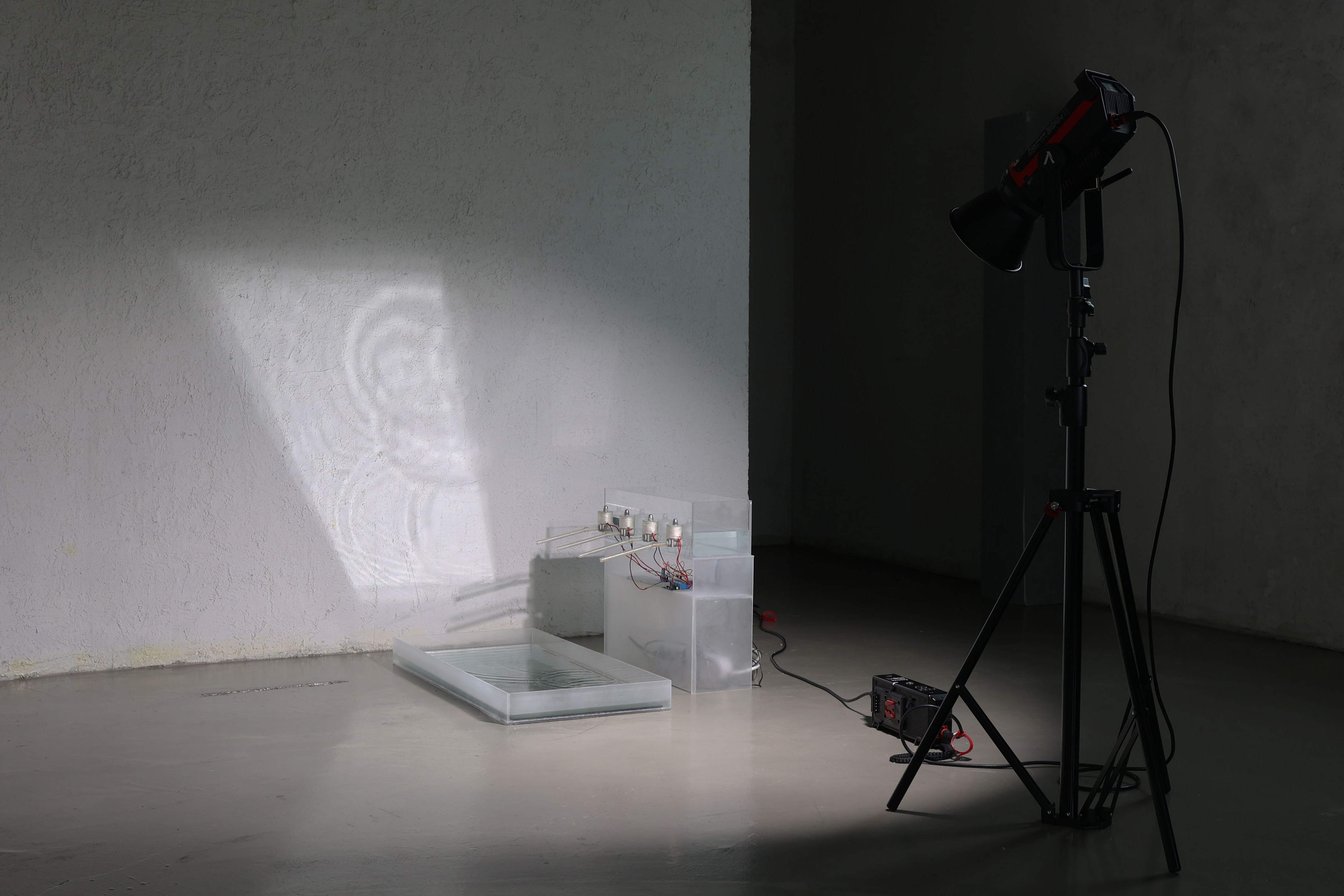
If we had no choice but to leave Earth and live on Mars, what moment should we take from Earth?
Pulse is a set of devices to recreate the moment of skipping stone at dawn.
Once you swing the stone, the image of waves will be projected on the wall with the collabo of a water tank, mirror, and sharp lighting.
About Interaction
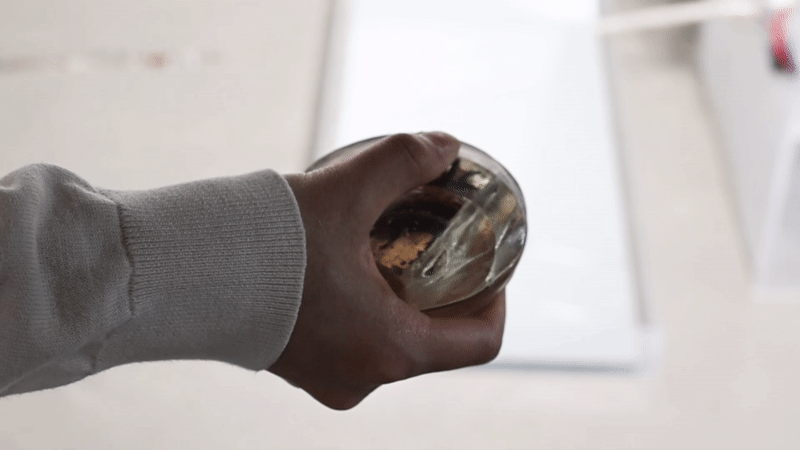
Signifier & Affordance
The wave pattern on the rock works as a signifier on which side to grab it.
Also, the rock itself gives affordance of holding with one hand, with the pebble-like shape and the handy size.
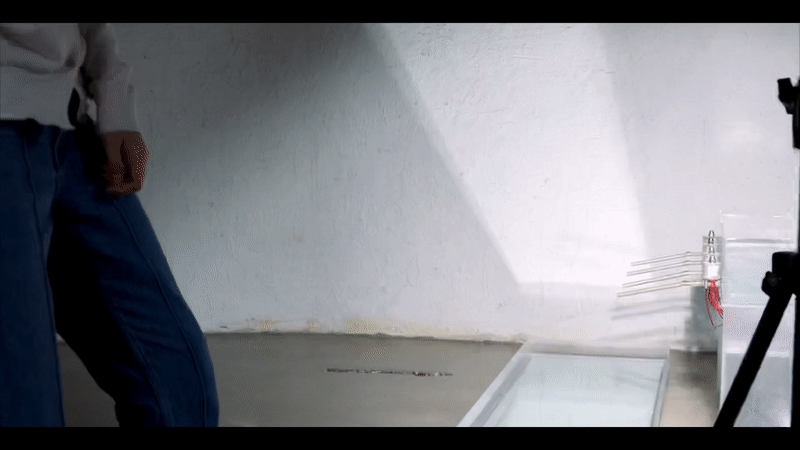
Input
The action to operate the set of devices is, swinging one's arm grabbing the rock.
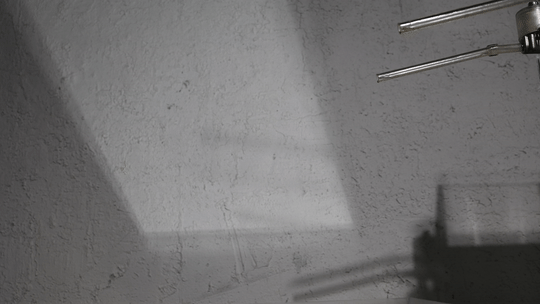
Output
As feedbacks of input action, an LED turns on, and solenoid valves open serially, making operation sound. Waterdrops from these valves make the wave.
This will be projected on the wall with the mirror on the bottom of the water tank.
Components

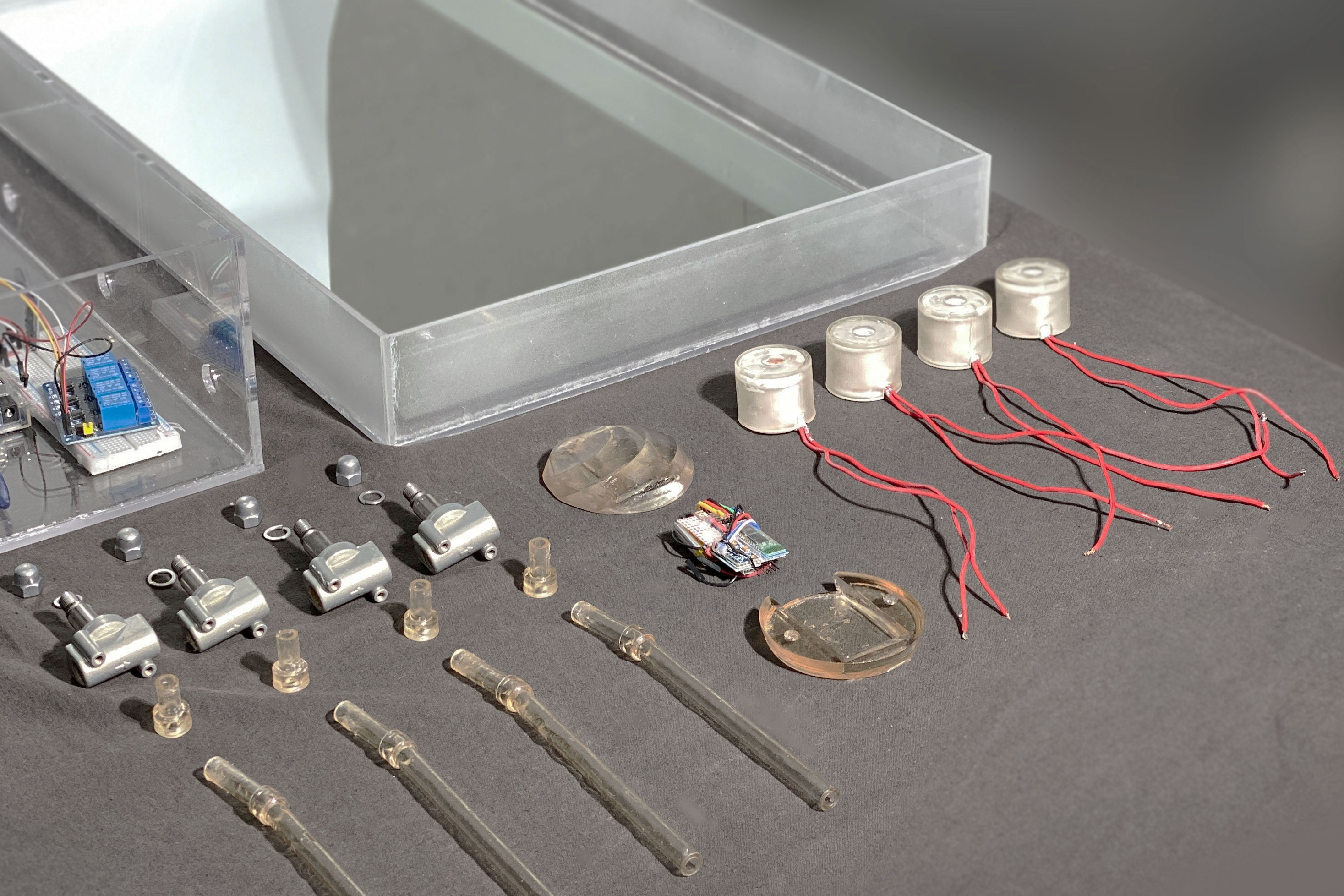



Concept
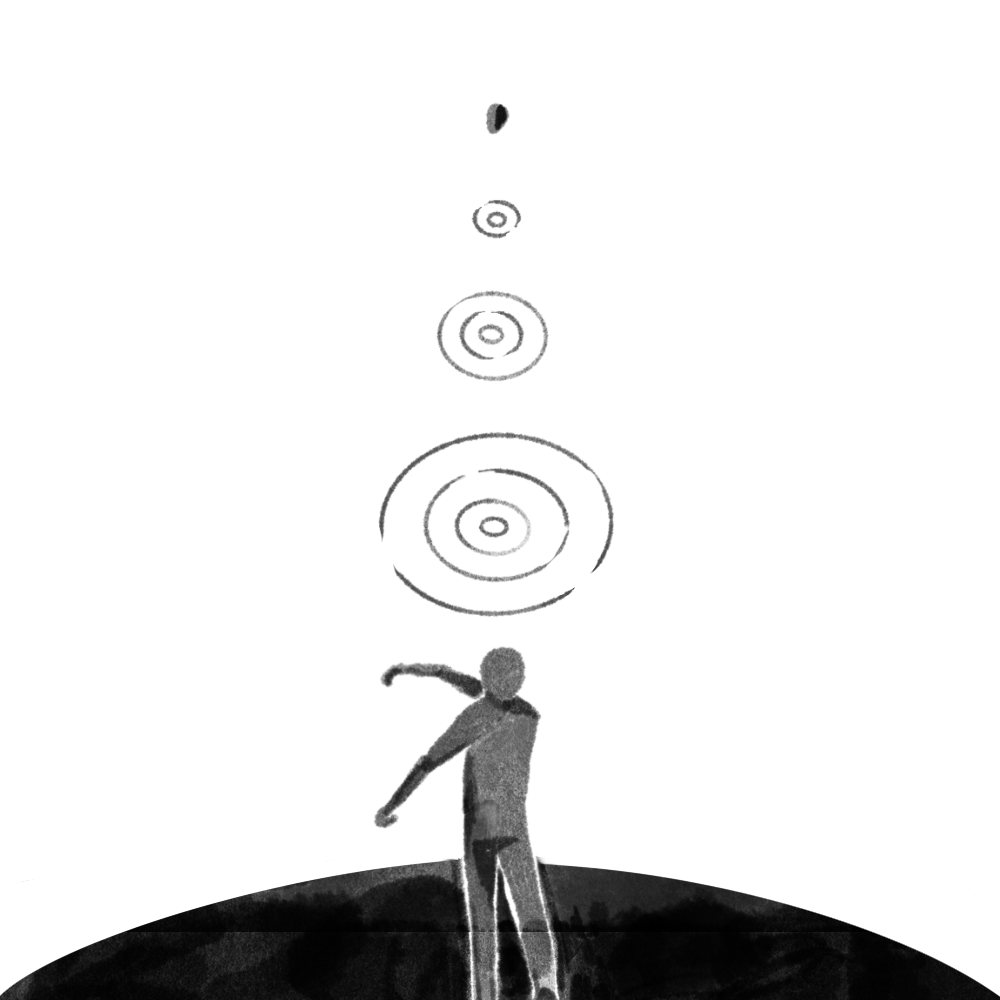
We were inspired by the moment of skipping stones by the calm river at dawn.
When skipping stones, the heavy stone slides on the water and leaves a wave on it.
We found this image somehow gives the feeling of surreality and decided to take this to Mars.
When skipping stones, the heavy stone slides on the water and leaves a wave on it.
We found this image somehow gives the feeling of surreality and decided to take this to Mars.
The First Prototype

On the first working prototype, we used servo motors, acrylic pipes, beads, and an ultrasonic sensor.
After that try, we were able to find two things to improve.
- Water drops will produce smoother waves rather than beads since they can merge into the water.
- The ultrasonic sensor is fixed at one point, thus it is not a suitable option to sense a swing. It is much more natural to detect an audience’s movement with the rock with a gyro sensor because it follows the audience’s hand.
Dropping Water with the Solenoid Valve
To make each drop of water, a solenoid valve and relay module were used.
Technical Diagram

We thought about how to express the endless wavelength of water that can be seen by a stone skipping more effectively.
Instead of throwing the pebble directly, the input was set in the way of swinging it.
The sensor detects the angular velocity of this swing, and the solenoid valves operate accordingly, causing the water to drop to create wavelengths.
To express these waves more dramatically, we built a structure in which the water shadow reflected on the wall.
Capturing the Audience’s Swing
At first, we used the radian value of the yaw axis. However, this was not enough to let solenoid valves work at the right time. This could be easily solved by using a touch sensor and making the audience touch it while they are swinging the rock. However, that never could be a natural input.
So we decided to use angular velocity and smoothed the values by averaging them.
With this process, no touch was needed.


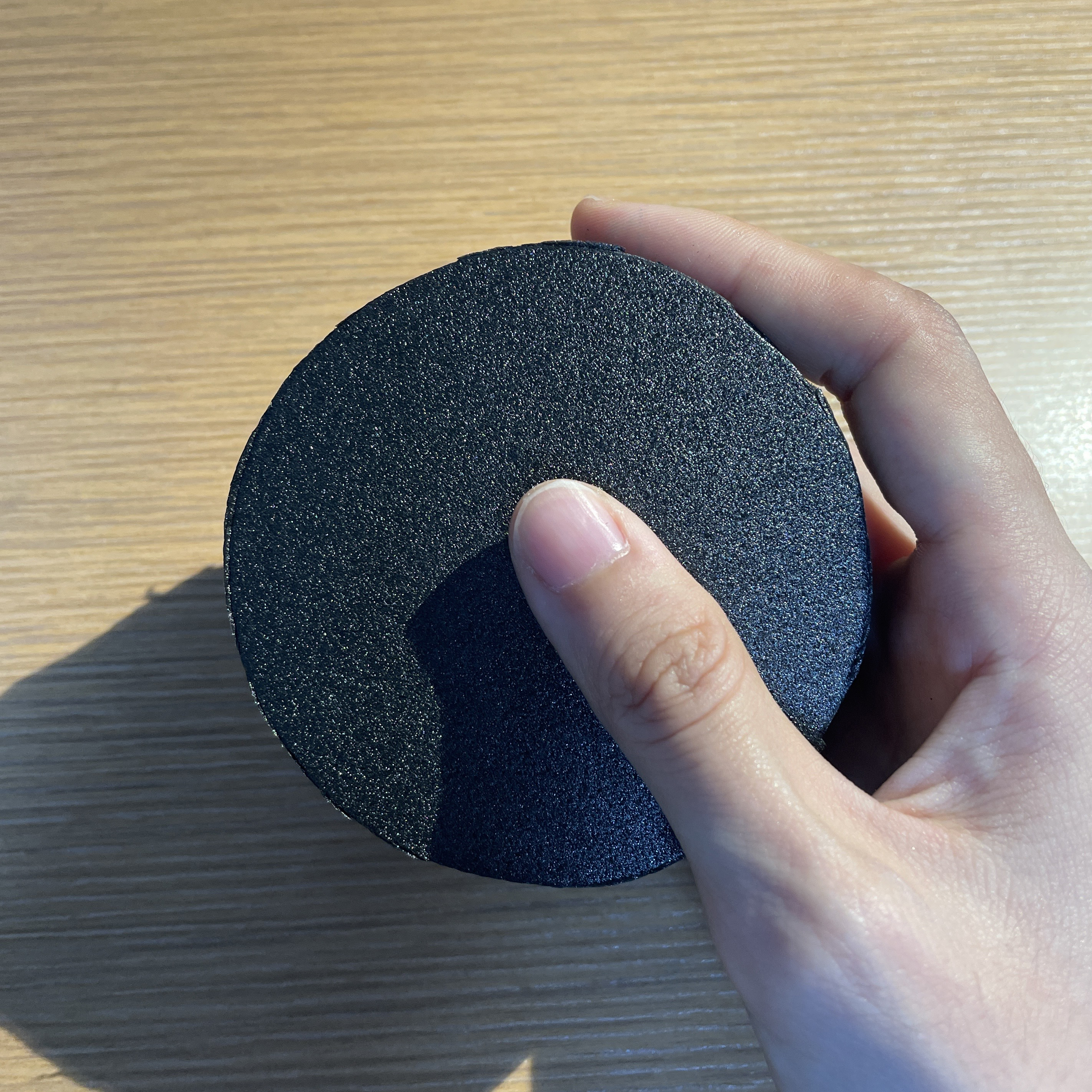
Then, we wired all the modules and checked the scale of the case.
Constructing the Set



We made two water tanks and one support with acrylic boards.

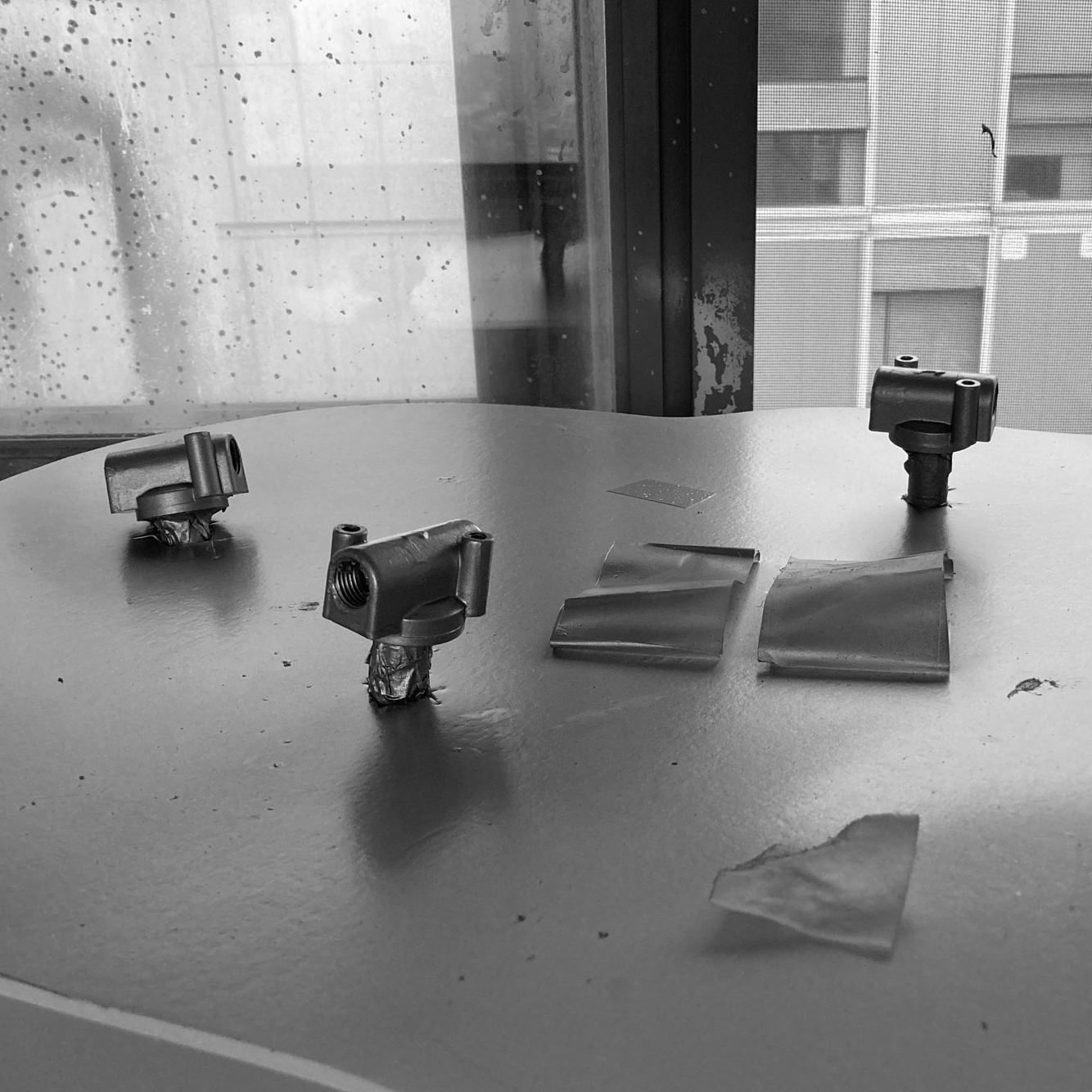
For visual harmony of the set, the covers of the solenoid valve and water pipes are resin-printed and nicely finished.
Plus, the metal parts of the valve were coated with silver spray.



The cover and Arduino part were put together very well.

After finishing all the parts, we assembled all of them.
Filming

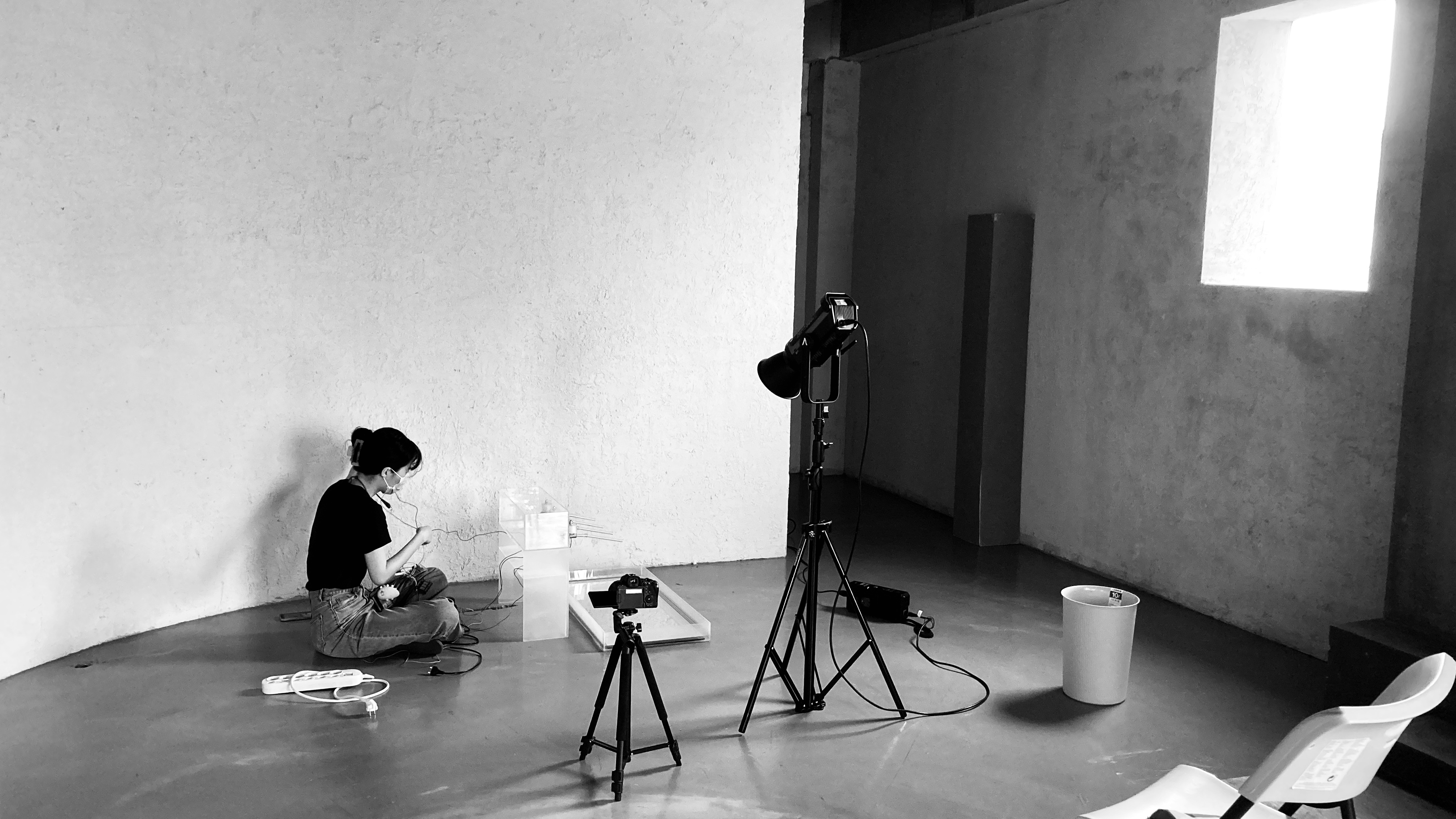
This is how we filmed the intro video.
If you want to hear the operating sound, please unmute the video above! 🥰
Thank you!